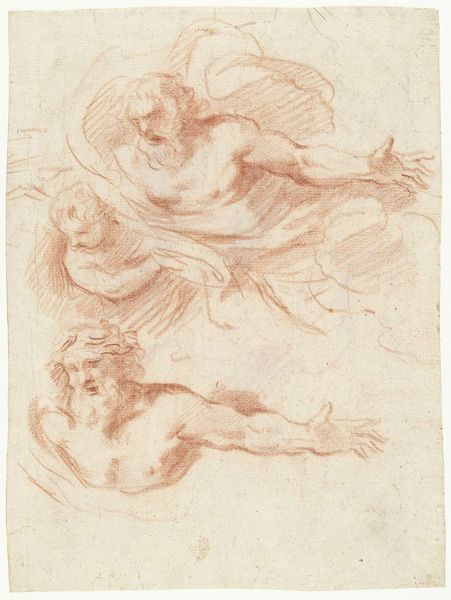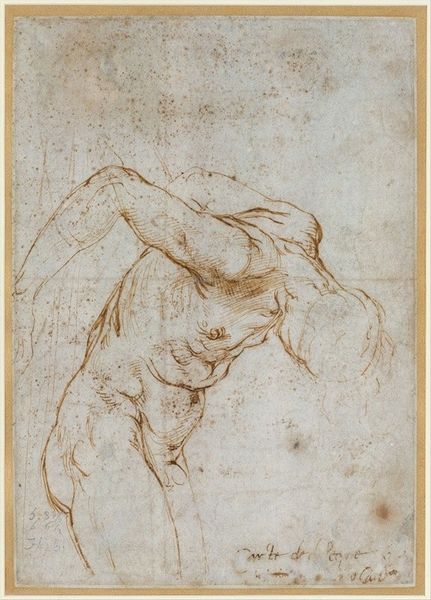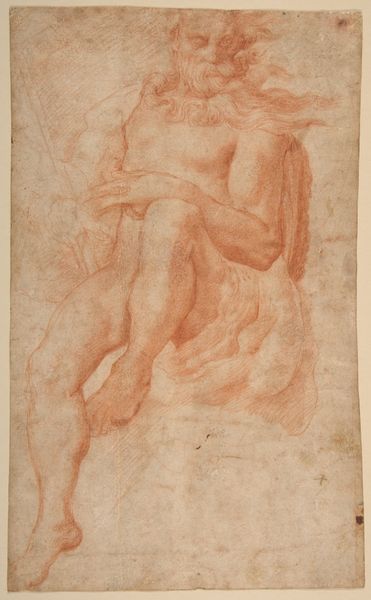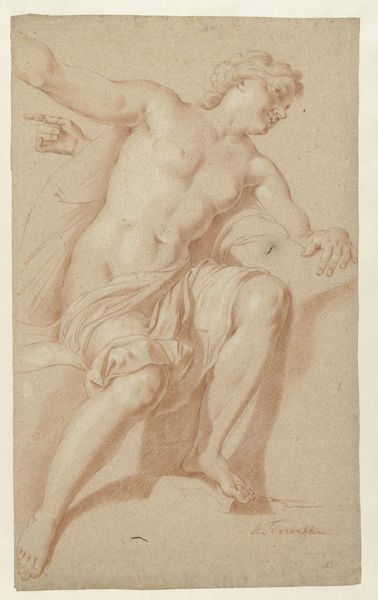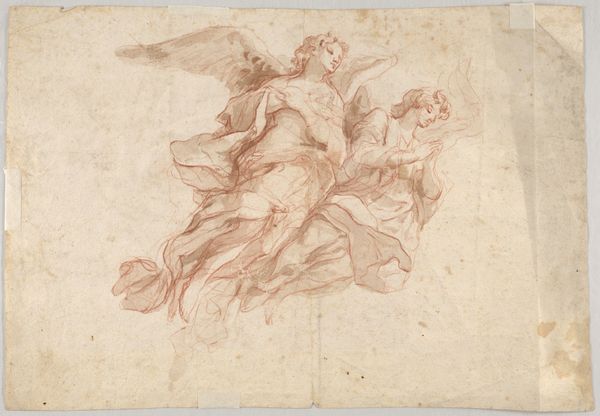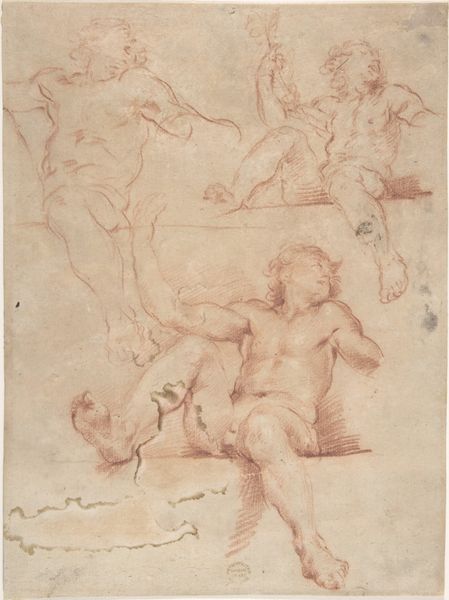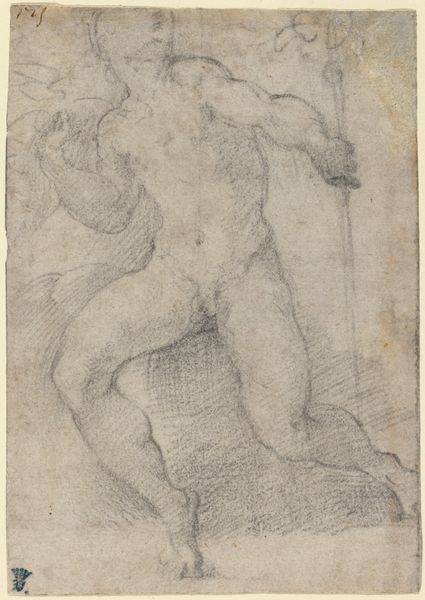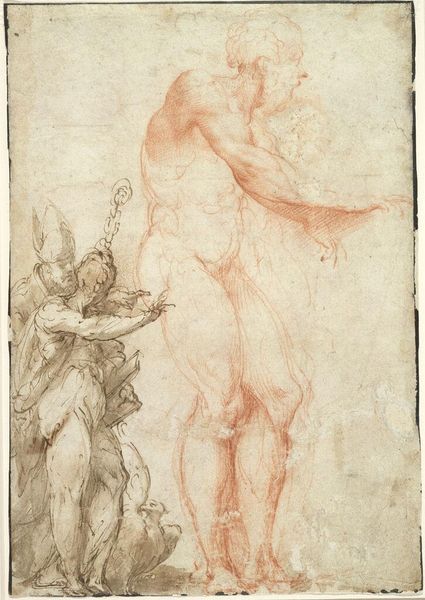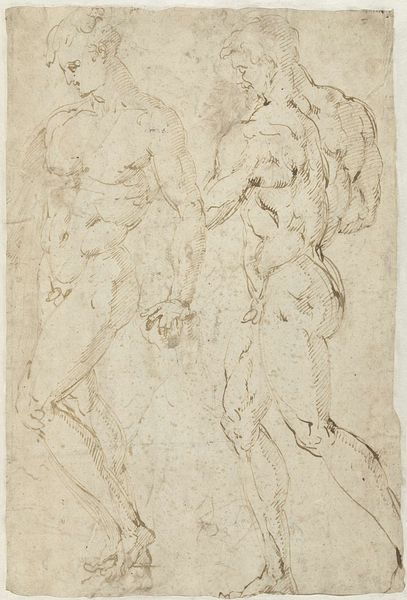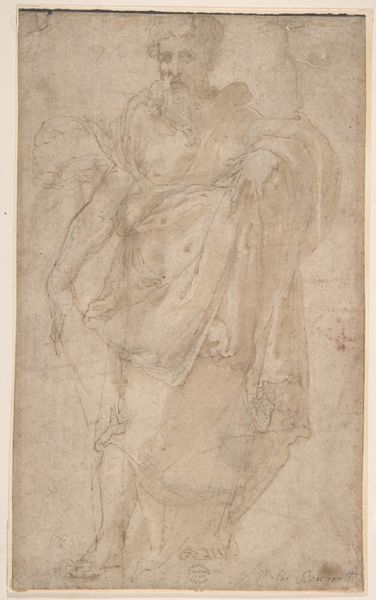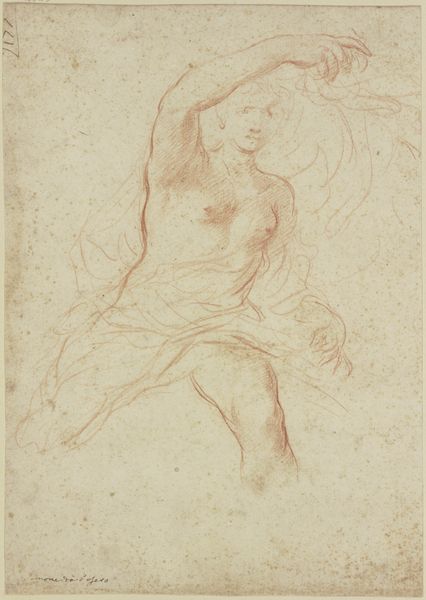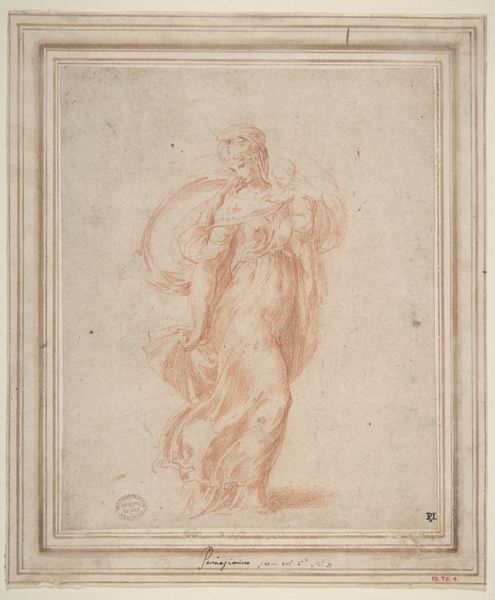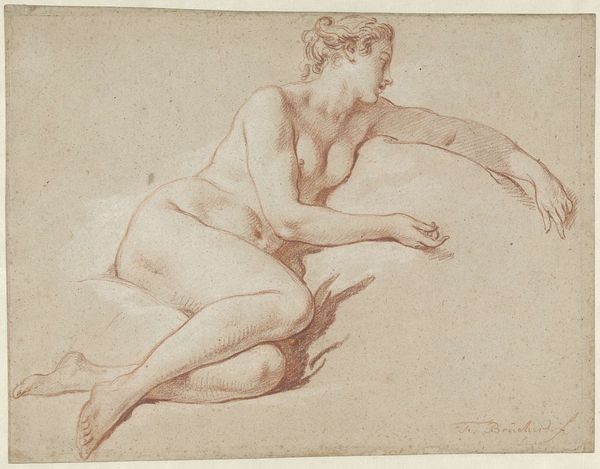
drawing, pencil
#
portrait
#
pencil drawn
#
drawing
#
toned paper
#
pencil sketch
#
figuration
#
11_renaissance
#
pencil drawing
#
pencil
#
portrait drawing
#
italian-renaissance
#
nude
Dimensions: height 218 mm, width 193 mm
Copyright: Rijks Museum: Open Domain
Editor: This is "Op een boog leunende naakte vrouw en twee kinderen," or "Naked Woman Leaning on a Bow with Two Children," a pencil drawing on toned paper by Pirro Ligorio, created sometime between 1535 and 1545. I'm immediately struck by how the red chalk pencil lends a warmth and almost fleshy quality to the figures. What jumps out at you when you see this piece? Curator: Well, consider the materiality itself. Red chalk, easily accessible, relatively inexpensive, a common choice for preliminary sketches during the Renaissance. It allowed artists like Ligorio to explore form and composition, test ideas about the body, without the commitment of more costly or permanent media. Think of the economies at play; the material speaks to the artist’s workshop, and the everyday labor of artistic production. What does it mean to depict the nude – historically a signifier of wealth and status – through such a readily available medium? Editor: That's fascinating! I hadn't really thought about the choice of material in that way, but it makes sense. The sketch-like quality also seems important, as though we are seeing the artist's thought process. Curator: Precisely! The medium also challenges the typical boundaries of "high art." The drawing shows a woman, possibly Venus given the nudity and the children (Cupids), a classical subject traditionally reserved for painting or sculpture. But here it is rendered in a humble, almost utilitarian material. Think of it not as a lesser version, but its own declaration! Editor: So it democratizes the subject matter in a way? Makes it more accessible, both for the artist to produce and, potentially, for a wider audience to view sketches like these? Curator: Yes, exactly! The red chalk makes the mythological figure accessible. And perhaps prompts a question about who such figures serve, what they mean, and who gets access to those meanings. What do you think Ligorio wants the viewer to consider about this figure, rendered in this way? Editor: That really shifts my perspective. I see the piece now not just as a preparatory drawing, but as a statement about art making itself and how art is accessible based on what means the artist has available to them. Thank you. Curator: And thank you. Considering art through its materials can reveal surprising and important social and economic underpinnings that we may otherwise overlook.
Comments
No comments
Be the first to comment and join the conversation on the ultimate creative platform.
